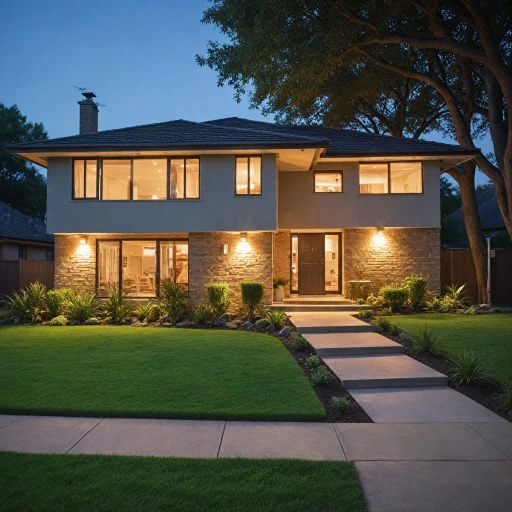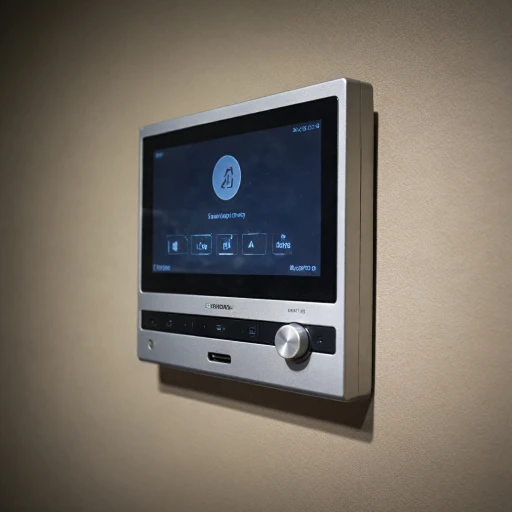
The Basics of Car Multi-Camera Systems
What are Car Multi-Camera Systems?
A car multi-camera system consists of multiple cameras strategically positioned across a vehicle to provide comprehensive coverage and enhanced visibility. These systems can include every perspective from a front dash cam to rearview and side cameras, ensuring that no part of your vehicle's surroundings goes unseen. Relevant for both single-car owners and fleet management, these systems efficiently aid in reducing blind spots and improving overall driving safety.Types of Cameras Included in the System
The most common setup generally incorporates the following cameras:- Dash Camera: Positioned on the vehicle's dashboard, the dash cam captures video from the front view. Its primary role is to document roads, traffic, and unexpected events when in motion.
- Rear View and Backup Cameras: Essential for safe parking, these backup cameras provide video feed from the back, making reversing tasks easier and decreasing the chances of accidents.
- Side Mirror Cameras: These can be mounted on the side mirrors or the sides of the car, greatly minimizing blind spots.
Features to Consider
Several features can enhance the functionality of a car multi-camera system:- Night Vision: Ensures the cameras capture clear video footage in low-light conditions.
- Quad View Monitor: Offers a screen within the vehicle that displays video feeds from multiple cameras simultaneously.
- Parking Mode: Allows the cameras to continue recording even when the vehicle is turned off, providing around-the-clock surveillance.
Applications and Uses
While multi-camera systems are beneficial for everyday drivers, their utility extends further, particularly for commercial use. Heavy-duty trucks and fleet vehicles greatly benefit from these systems through enhanced safety and efficient fleet management. Real-time monitoring features available in some models can even offer gps tracking for additional oversight. Investing in a multi-camera system goes beyond safety; it contributes to a peace of mind whether you're dealing with regular commutes or managing a fleet of vehicles. To learn more about enhancing your security with a comprehensive multi-camera setup, delve into details about enhancing home security with an 8-camera system.Evaluating the Cost of Car Multi-Camera Systems
Assessing the Financial Implications of Multi-Camera Systems
When considering a multi-camera system for your vehicle, understanding the financial implications is crucial. The investment in such systems can vary significantly based on various factors. Here’s a closer look at what affects the cost.- Type of Camera System: The original price of a camera system can differ depending on whether you choose a basic dash cam setup or a more advanced multi-camera system. Complex systems offering a quad view that include front and rear cameras for comprehensive coverage, or even fleet management capabilities, tend to be on the higher end of the price spectrum.
- Features and Functionality: Systems that offer features such as night vision, gps tracking, and parking mode typically have a higher price point. These functionalities enhance safety and provide real-time monitoring, adding to the overall value but also to the cost.
- Installation Costs: The installation of these systems can also contribute to the overall expenditure. Heavy duty systems for larger vehicles like trucks might require a more complex setup, affecting the price. It's important to factor in whether professional installation is necessary or if you can manage with a DIY approach.
- Brand and Model: Different brands offer their unique set of features and varying levels of durability. While some vehicles might only require a simple backup camera or dash cams for basic needs, others used in fleet management might opt for a more robust multi camera system.
- Long-Term Considerations: Investing in a higher-end system could potentially lead to savings over time through enhanced safety and potentially lower insurance premiums. Regular maintenance and updates to the systems could also influence ongoing costs and savings.
Benefits of Investing in a Car Multi-Camera System
Enhanced Safety and Security
Investing in a car multi-camera system significantly boosts the safety and security of your vehicle. With features like real-time monitoring and night vision, these systems provide comprehensive coverage, ensuring you have a clear view of your surroundings at all times. This is particularly beneficial for fleet management, where maintaining the safety of multiple vehicles is crucial.
Improved Parking and Maneuverability
One of the standout benefits of a multi-camera system is its ability to assist with parking and maneuvering. With a rear view and backup camera, drivers can easily navigate tight spaces and avoid obstacles. The quad view feature allows for a complete 360-degree perspective, making it easier to park even in the most challenging spots.
Accident Documentation and Evidence
In the unfortunate event of an accident, having a dash cam or dash camera can be invaluable. These cameras record video footage that can serve as crucial evidence in insurance claims or legal disputes. This not only helps in protecting your interests but also in potentially reducing insurance premiums.
Cost Efficiency and Value
While the original price of a car multi-camera system might seem high, the long-term benefits often outweigh the initial investment. By preventing accidents and aiding in fleet management, these systems can save money over time. Additionally, features like parking mode and gps tracking enhance the overall value, making it a worthwhile investment.
Versatility and Customization
Car multi-camera systems offer a range of options to suit different needs. Whether you drive a truck, a heavy duty vehicle, or a standard car, there's a system designed for you. The ability to customize the setup, from the number of cameras to the type of monitor, ensures that you get the most out of your investment.
For more insights on maximizing the value of your camera system, consider exploring this resource.
Comparing Different Types of Car Multi-Camera Systems
Exploring Various Camera Options for Vehicles
When considering a multi-camera system for your vehicle, it's essential to compare the different types available. Understanding the nuances of each camera and its installation requirements will help you make an informed decision, especially when balancing price and safety.
1. Dash Cams: These are primarily used to capture video from the front view of the vehicle, and they can often include GPS tracking features. Some variants come with two channels, offering both front and rear recordings, which are particularly useful for those looking to gain comprehensive coverage.
2. Backup Cameras: Focused on enhancing safety, these are crucial when reversing. They provide a clear view of the rear, making parking in tight spots or busy areas far more manageable. For trucks or larger vehicles, heavy-duty backup cam options provide increased durability under demanding conditions.
3. Quad View Systems: These systems create a 360-degree view by utilizing multiple cameras placed around the vehicle. While the initial price might be higher, the benefits in terms of real-time awareness can be unmatched, particularly useful in fleet management.
4. Night Vision Cameras: Beneficial for those who frequently drive in low-light conditions. These cameras use infrared technology to capture clear images in the dark, adding another layer of security.
5. Parking Mode: A feature often incorporated in dash cameras, providing monitoring even when the vehicle is off, ensuring your car is kept under watch when parked or unattended.
When choosing a system, weigh the features against your needs—be it a single dash cam for general recordings or a comprehensive fleet management solution with advanced monitoring capabilities. Each choice also has specific installation considerations; knowing the differences will enable you to maximize the value of your investment, ensuring a seamless integration into your vehicle's ecosystem.
Installation Considerations for Car Multi-Camera Systems
Key Factors for Successful Car Camera System Installation
When it comes to installing a car multi-camera system, careful consideration and planning are essential to maximize its effectiveness. Here's what factors you should pay attention to during installation to ensure your vehicle is well-equipped with a functional camera system.- Selecting the Right Type of Cameras: Depending on your needs, you might choose from various types of vehicle cameras, such as dash cams, rear view cameras, or a complete multi camera system. Each offers distinct advantages for different scenarios like parking assistance or real-time monitoring.
- Positioning is Key: Proper placement of each camera can dramatically enhance coverage. Ensure the cameras don't obstruct views unnecessarily. For instance, dash cameras should be strategically placed to capture the full front view without distractions.
- Consideration of Power Source: Many systems can be powered through the car battery or a dedicated power pack. Consistent power supply is crucial for continuous use and features such as night vision and parking mode.
- Integration with Existing Systems: Compatibility with existing car systems like GPS tracking or fleet management software is vital. Integration ensures that features like backup cameras work seamlessly with your onboard monitor for efficient navigation and safety.
- Professional Installation: While installing your camera system yourself might save on the price, professional installation can prevent potential issues. Professional installers ensure cameras are securely and correctly positioned, and all connections are robust, which is especially important for heavy-duty trucks and fleet vehicles.
- Software Setup and Calibration: After the cameras are installed, proper software setup is necessary for functionalities like quad view or split-screen options. Ensure calibration for precise field of view and video recording assurance.
Maximizing the Value of Your Car Multi-Camera System
Maximizing Your System's Full Potential
To truly maximize the value of a car multi-camera system, strategic usage and regular maintenance are key. The initial installation might have been a straightforward process, but ongoing attention will ensure that each element of the system serves its purpose effectively.- Regular System Checks: Consistently monitor and maintain your camera systems, ensuring that all cameras, whether a dash cam or a rear view, are functioning properly. This includes checking the lenses for clarity and ensuring the connections are secure.
- Software Updates: Keep the system’s software up to date to enhance video processing and improve security features, which also helps in refining features such as night vision and parking mode.
- Optimal Camera Placement: Evaluate and adjust camera placements for the best view. A front rear combo ensures comprehensive coverage, while quad view setups provide extensive visibility for fleet management or heavy duty trucks.
- Data Management: Efficiently manage the data collected by your vehicle's cameras. Utilize GPS tracking to add an extra layer of security and ensure video storage solutions meet your requirements. This is vital for both individual users and fleet operations where safety and completeness of video data are essential.
- User Training: Familiarize yourself and any other drivers with the system's functionalities. Knowing how to properly use and interpret the camera's data will optimize the system’s benefits, especially in real time monitoring and backup camera navigation.
- Cost Management: Evaluate whether any upgrades or additional components could provide further value compared to the original price of your current setup. Balancing the price against potential benefits is key to maintaining a cost-effective system.













